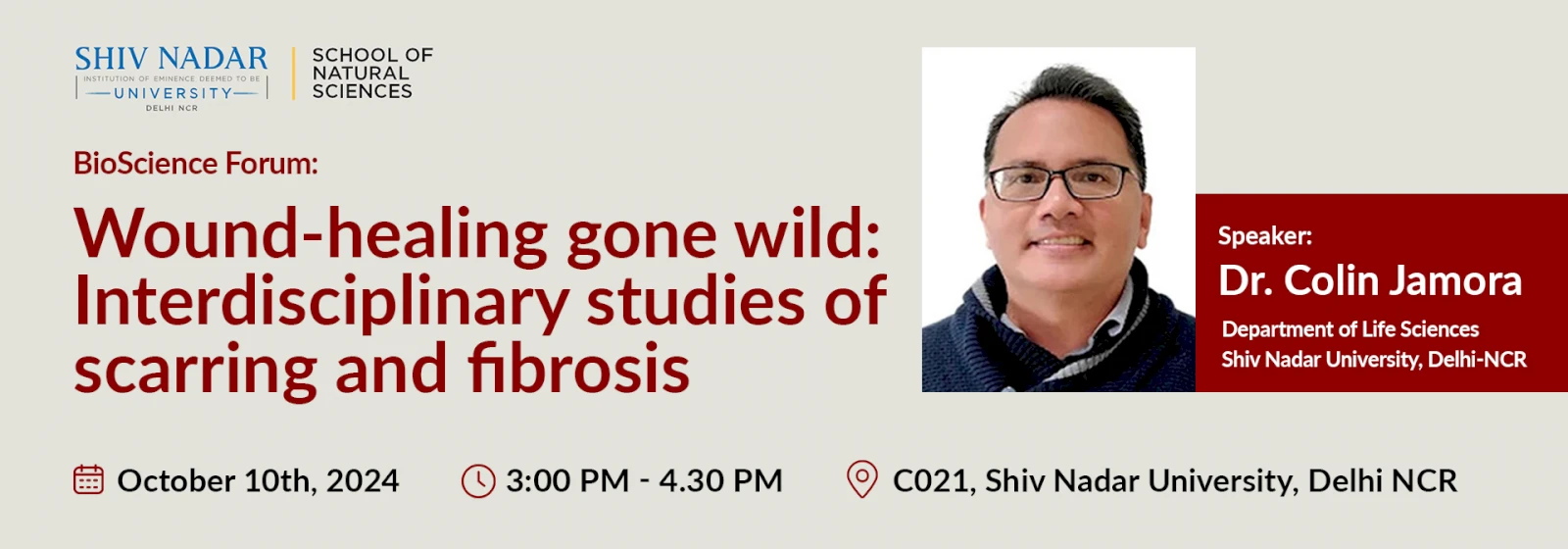BioScience Forum Series: Interdisciplinary Insights into Scarring and Fibrosis
Join us for the next talk in the BioScience Forum series (BSF) featuring Dr. Colin Jamora, Professor and Head of the Department of Life Sciences at Shiv Nadar Institution of Eminence, Delhi NCR. The event will take place on 10th October 2024, from 3:00 PM to 4:30 PM in Room C021. Dr. Jamora will present his research on “Wound-healing gone wild: Interdisciplinary studies of scarring and fibrosis.” This presentation will explore the phenomenon of tissue fibrosis, a chronic overscarring condition that compromises organ function and contributes to approximately 40% of global deaths. Despite its significant impact, effective treatments to halt or reverse fibrosis are currently lacking. Dr. Jamora's research utilizes genetically engineered mouse models to identify novel factors driving fibrogenesis and highlights collaborative findings with clinicians and bioengineers that reveal potential therapeutic targets. Refreshments will be served after the talk.
Abstract: Tissue fibrosis is an overscarring phenomenon that occurs when the wound healing process becomes chronically active. This condition ultimately compromises organ function and contributes to approximately 40% of all deaths worldwide. Despite its significant impact, there are currently no effective treatments to stop or reverse its progression. Therefore, a mechanistic understanding of fibrogenesis is essential for identifying new therapeutic targets. In our research using a genetically engineered mouse model of skin fibrosis, we have discovered several novel factors that fuel this pathology. Our studies demonstrate that these factors influence a wide range of processes, including inflammation, vascular function, fibroblast activity, and tissue stiffness. The involvement of various cell types that can perform overlapping functions is a major reason why targeting a single cell type or signaling pathway has largely failed in clinical trials for anti-fibrotic drugs. I will present findings from our collaborations with clinicians and bioengineers, which have uncovered critical nodal points that can be targeted. These insights have shown promising results in preclinical models, paving the way for potential new therapies

Share this: